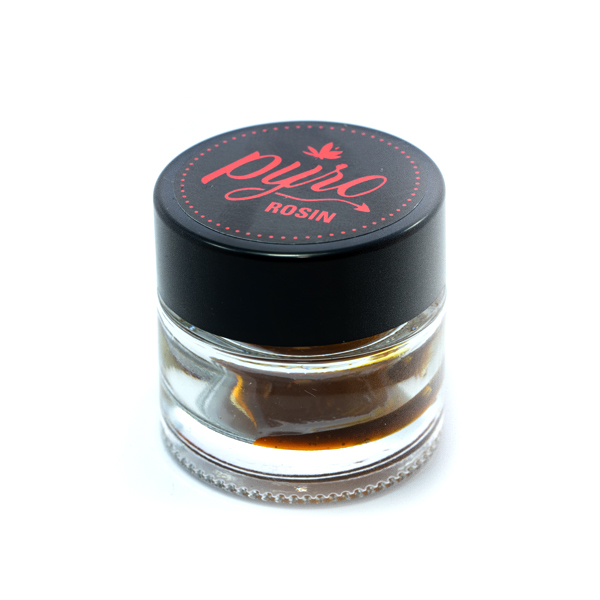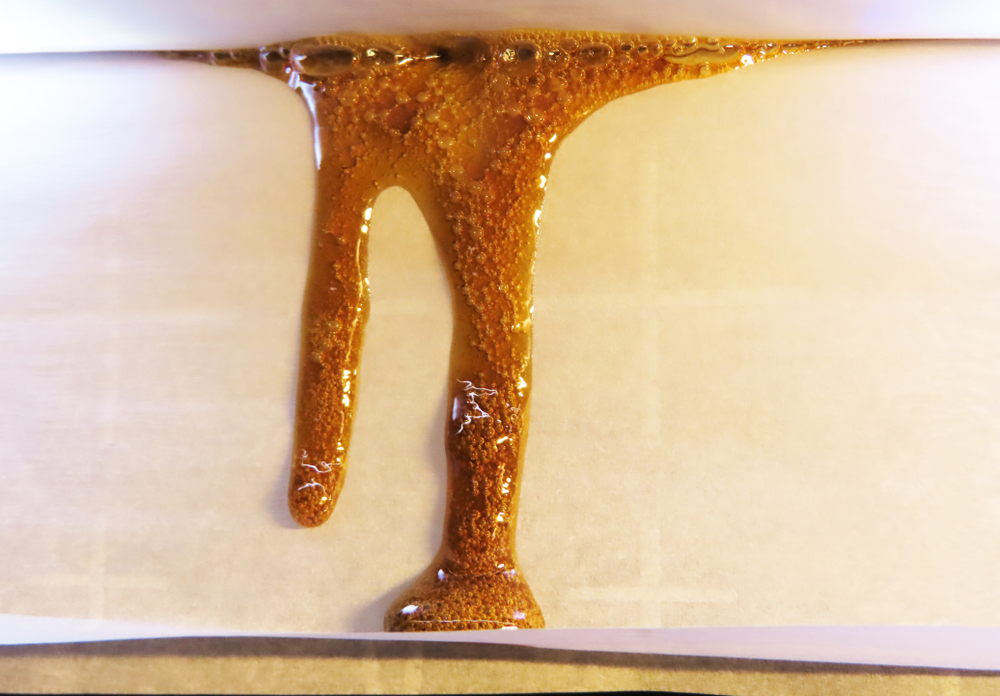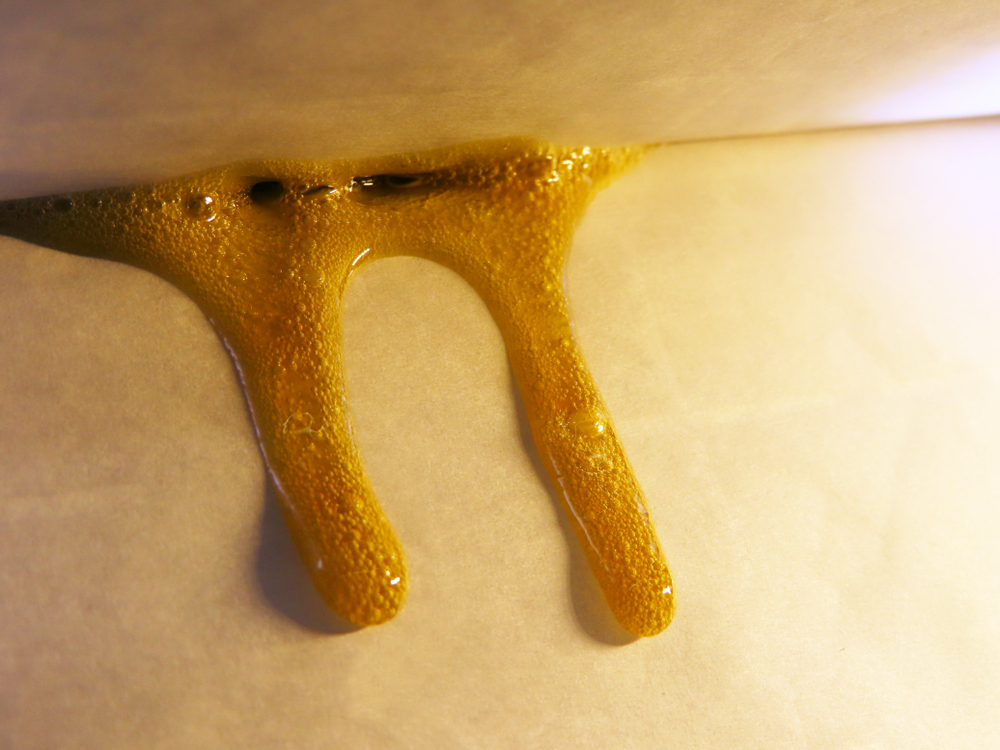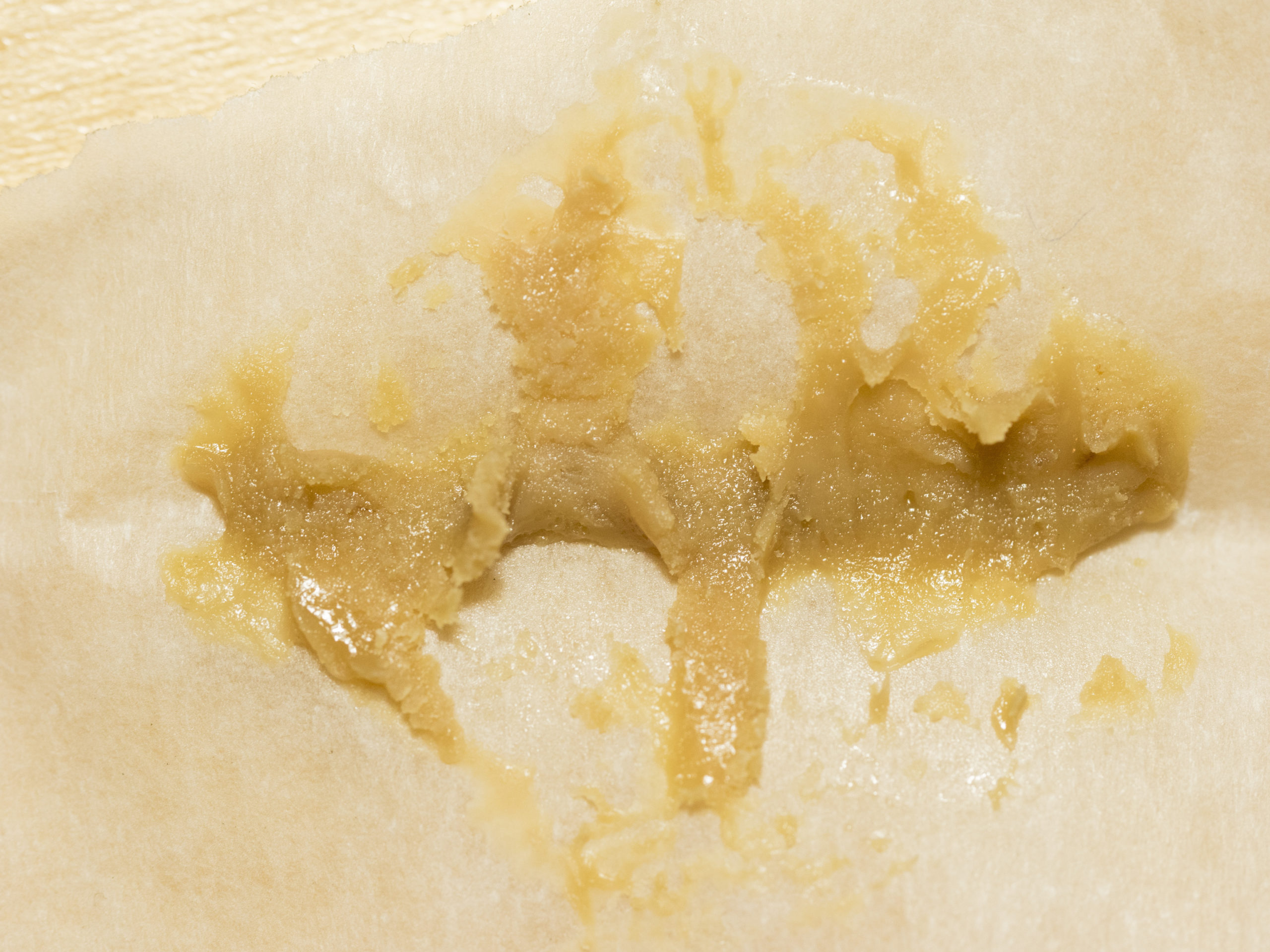If you’re new to the world of cannabis or concentrates, then you may be asking yourself “what is rosin?” Even if you’re an experienced dabber, you still might not know what rosin, or its other nickname, squish, actually is.
In this guide, we’ll be discussing what rosin is, why it’s so sought after and how to make it. Before you get too intimidated, keep in mind rosin is much easier to make than other types of concentrates like wax, shatter, or distillates. The manufacturing process itself is so different that rosin is actually the first of its kind to occupy its own, unique category of cannabis concentrates.
Without requiring the use of solvents such as butane, ethyl or carbon dioxide, you never run the risk of starting a fire or any chemical explosions!
Interest piqued? Stay with us as we give you the ins-and-outs of this wonderful, tasty cannabis concentrate!
What is Rosin?

First, let’s distinguish that there are two types of rosin that you might be familiar with. Violin rosin, a type of wax that’s used to coat the bows to ease friction and improve the sound — the other is a solventless marijuana concentrate.
Rosin made from cannabis is a type of marijuana concentrate that uses only heat and pressure to manufacture. Unlike other types of concentrates, rosin doesn’t require the use of harsh solvents like CO2, ethanol, or butane — which can sometimes be left behind and be hazardous towards your health.
Rosin is made by the pressing and heating of cannabis buds until all the oil and other compounds are extracted and collected. Other concentrates need the use of solvents to strip the cannabinoids and terpenes off the plant before being ready to consume.
Poorly made or low-quality concentrates can leave traces of solvent behind, which is why there is such a large following of cannabis enthusiasts that think solventless is the only way to go.
However, it needs to be addressed that concentrates sourced from educated growers and suppliers produce high-quality concentrates that don’t leave behind traces of solvent residue.
Supplies needed:
Making rosin is relatively straightforward and inexpensive in regards to how to make it and the materials needed — which is great if you’re not a botanist or chemist.
Materials Needed:
- Parchment paper
- Hair straightener
- Safety/oven glove
- Metal dabber
You can find most of these materials on Amazon or at your local Walmart, and as you can see, the materials list is short, and the items on there are cheap.
Getting Started

Naturally, the more buds you have to work with — the longer it will take. But before we dive in too deep, there are a few things to consider first:
- Using hair straighteners with a digital temperature display because it ensures none of the cannabinoids will be damaged from getting too hot. The optimal temperature range is between 200-300℉, as is using hair straighteners with hot plates that are at least two inches wide or larger.
- We also recommend making 7 grams of rosin at a time, because doing it in bulk doesn’t offer the greatest return on quality, so keep this in mind before you decide to go hog-wild.
How to Make Rosin
- Pre-heat your hair straightener to 200-300℉. It will serve as the “rosin press“.
- Be sure your buds are moist, but not wet.
- Use safety gloves or oven mitts while using the straightener as your fingers will be close enough to the hot plates they can be burned.
- Positioning your hair straightener to look like a stapler (one paddle facing down, the other lifted in the air) allows you to use your body weight to press down firmly— yielding better results.
- Next, cut out a piece of parchment paper larger than the width of the straighteners hot plates.
- Press and form the bud into a smaller, dense nug with your fingers.
- Place your pressed nug in the middle of your piece of parchment paper.
- Take the nug and surrounding parchment paper, and place it in the middle of the hot plates on your hair straightener.
- Making sure to use your gloves and body weight, press the plates of the hair straightener together, and hold it down for about 5-10 seconds.
- Remove the freshly pressed weed from the parchment paper, making sure to note how much of the sticky rosin substance is left behind. You may need to do it 2-3 times before everything is extracted — but don’t fret, this is completely normal.
- After you get all your rosin extracted, you’ll want to take your dabber, scrape it up, and place it in a container to be enjoyed. Sometimes it is easier to freeze the rosin on the parchment paper before trying to collect it because it allows it to be flaked off instead of smeared everywhere.
Ta da! You’ve now made a solvent-free concentrate that you can load into vaporizers, hash pipes, dab rigs, or sprinkled over a bowl for some extra zip. Like anything worth having in life, making rosin may take a little trial and error before you fully get in the swing of things— but it’s all worth it in the end.
Before we sign off, we have noticed some confusion regarding rosin we felt needed to be addressed. The two most commonly asked questions we get about rosin is: Is rosin better than shatter? And, what is the difference between rosin and resin?
Well, let’s start off by answering the first question.
Is Rosin Better Than Shatter?

It depends. Rosin is a type of concentrate that doesn’t require the use of solvents — which retains all the flavor and aroma of the original bud.
This is preferable to other concentrates that use solvents like butane, alcohol, or propane, because it alters the flavor, and residue can be left behind if it’s poorly made.
However, well-crafted concentrates do not leave any solvent residue behind and are just as safe to consume as solventless concentrates.
What is The Difference Between Rosin and Resin?
The big difference between rosin and resin is in how they’re made. Rosin uses heat and pressure, and resin uses solvents like alcohol, CO2, and butane. Both live resin and live rosin use cryogenically frozen weed — except live rosin doesn’t use solvents and live resin does.
You may also hear resin being referred to as the “reclaimed” tar that accumulates inside dirty pipes from old school stoners, but that concept is slowly phasing out with the expanding legalization of marijuana. People just don’t have the need to scrape and smoke resin as they once did.
Concluding Thoughts on Rosin
If the idea of leftover solvent residue turns you off, rosin could be your concentrate of choice because it’s free from any chemicals or solvents, and it retains the natural flavor and aroma profile of the plant.
You can find rosin in most dispensaries, but you may want to call ahead just in case. We encourage you to smell any rosin products you’re thinking of purchasing so you know first-hand how fresh it smells — you’ll be surprised at the differenced when compared to the likes of shatter and budders.
All it takes is some parchment paper, a hair straightener, bud, and a little bit of patience!


 No products in the cart.
No products in the cart.